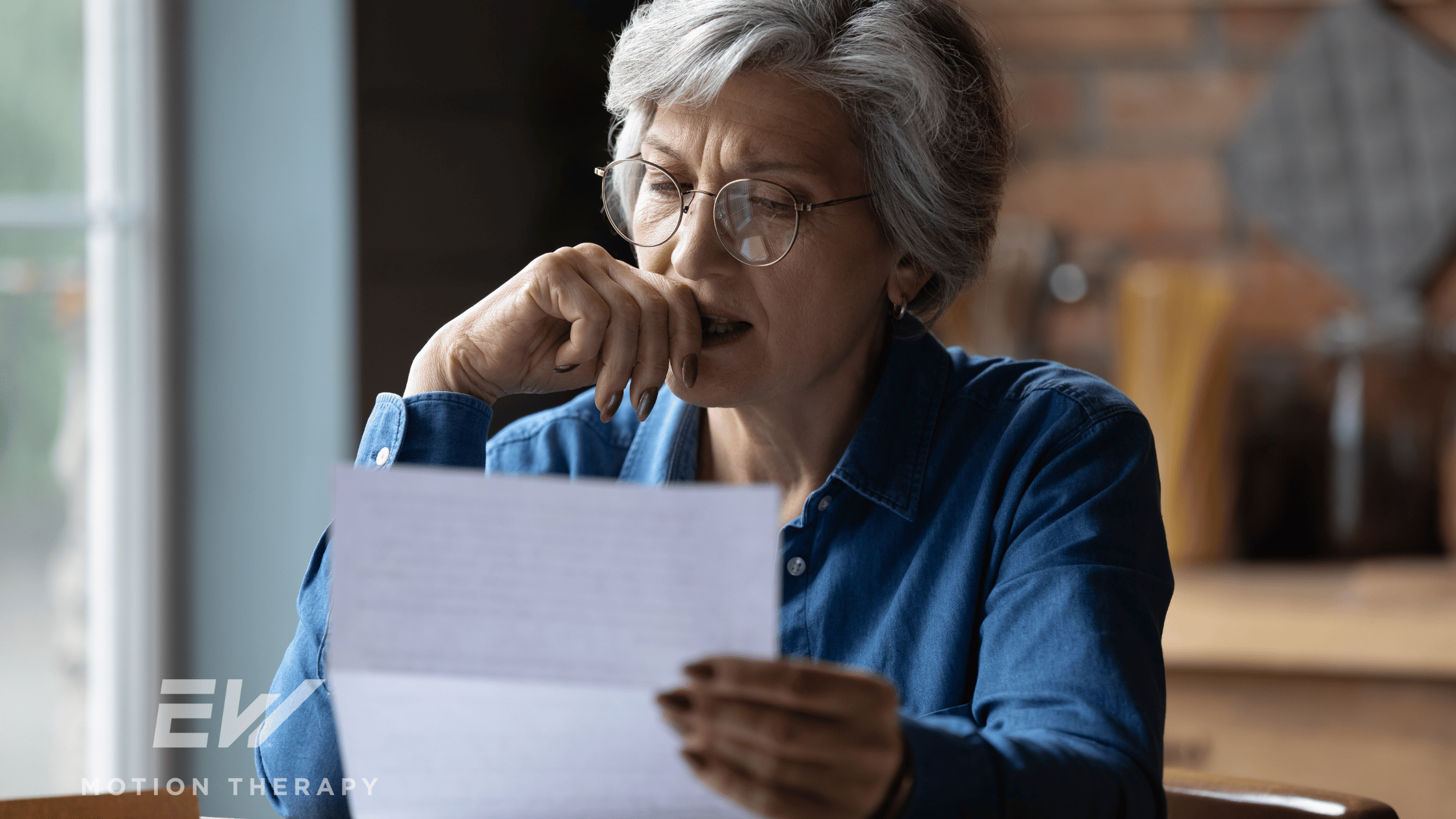Debunking Common Myths About Osteoporosis

Motion Specialist // EW Motion Therapy Homewood
Osteoporosis is a condition that weakens bones, making them fragile and more likely to break. It's often surrounded by misconceptions that can lead to a lack of proper care and prevention. Addressing these myths is crucial for understanding the reality of osteoporosis and taking proactive steps to maintain bone health. We love helping our clients with osteoporosis at EW Motion Therapy build strength and maintain independence through customized physical therapy and personal training programs. Even if you decide that our services don’t fit your needs, it’s still essential to debunk six common myths about osteoporosis, shedding light on the truth behind this condition.
Myth 1: Osteoporosis only happens to women
The reality: men are also at risk
While osteoporosis is more common in women, especially postmenopausal women, it is not exclusive to them. Men are also at risk, particularly as they age. According to the National Osteoporosis Foundation, about 25% of men over the age of 50 will break a bone due to osteoporosis. The misconception that osteoporosis is solely a women’s issue can prevent men from getting screened and taking necessary preventive measures.
Men tend to develop osteoporosis later in life than women, primarily because they generally have higher bone density from the start. However, when men do develop osteoporosis, they are more likely to suffer serious complications, including fractures. Men are less frequently diagnosed with osteoporosis, which often means the condition is more advanced when discovered. Therefore, awareness and early intervention are crucial for both men and women.
Myth 2: Osteoporosis is just a natural part of aging
The reality: osteoporosis is preventable and treatable
Aging brings about changes in bone density, but osteoporosis is not an inevitable part of aging. While it’s true that bone density decreases with age, osteoporosis is a specific condition that involves a significant loss of bone mass and strength, leading to an increased risk of fractures. The belief that osteoporosis is just a natural part of aging can lead to complacency, causing people to ignore preventive measures that could protect their bones.
Through lifestyle choices and medical treatments, osteoporosis can be prevented or its progression slowed. Weight-bearing exercises, a diet rich in calcium and vitamin D, avoiding smoking, and limiting alcohol intake are all effective ways to maintain bone health. Additionally, bone density screenings can help identify osteoporosis early, allowing timely treatment to strengthen bones and reduce the risk of fractures.
Myth 3: You don’t need to worry about osteoporosis until you’re older
The reality: bone health should be a lifelong concern
Many people believe osteoporosis is something to worry about only in old age. However, bone health is something that should be cared for throughout life. Peak bone mass is typically reached in one’s 20s, and the higher the peak bone mass, the more bone you have "in reserve" as you age. Building strong bones during youth and maintaining them throughout life can significantly reduce the risk of osteoporosis later on.
Ignoring bone health in younger years can lead to problems later in life, as the body starts to lose bone mass naturally after age 30. Early preventive measures are crucial. This includes regular physical activity, a balanced diet with adequate calcium and vitamin D, and avoiding lifestyle factors that can weaken bones, such as smoking and excessive alcohol consumption. Bone density testing is also recommended for those at risk, even before old age, to catch any signs of bone loss.
Myth 4: Broken bones are the only danger of osteoporosis
The reality: osteoporosis affects overall quality of life
While fractures are a significant risk associated with osteoporosis, they are not the only danger. Osteoporosis can lead to chronic pain, disability, and reduced quality of life. Spinal fractures, for example, can result in loss of height, severe back pain, and a hunched posture (kyphosis). This can lead to decreased mobility and independence, contributing to a sedentary lifestyle that further exacerbates the condition.
Moreover, the fear of falling and breaking a bone can lead to social isolation and depression, particularly in older adults. The impact of osteoporosis extends beyond the physical, affecting mental health and emotional well-being. It’s essential to recognize that osteoporosis is a serious condition that requires comprehensive management to maintain both physical and mental health.
Myth 5: Bones only break during a fall
The reality: bones can break without an apparent cause
A common misconception is that bones only break during a fall or a significant impact. However, in individuals with osteoporosis, bones can become so weak that they can fracture with minimal or even no apparent trauma. For example, vertebral fractures can occur from simple activities such as bending over, lifting something light, or even sneezing.
These types of fractures often go unnoticed because they may not cause immediate pain or discomfort, leading to a delay in diagnosis and treatment. Silent fractures can lead to a gradual loss of height and a stooped posture, as well as chronic pain over time. Recognizing that bones can break without a fall is essential for understanding the seriousness of osteoporosis and the importance of ongoing management and care.
Myth 6: Osteoporosis can be entirely reversed
The reality: osteoporosis can be managed, not completely reversed
There’s a misconception that once diagnosed with osteoporosis, it can be reversed entirely through medication and lifestyle changes. While treatments can significantly improve bone density and reduce the risk of fractures, osteoporosis cannot be entirely reversed. The goal of treatment is to prevent further bone loss, strengthen existing bone, and reduce the risk of fractures.
Medications such as bisphosphonates, hormone replacement therapy, and others can help slow the progression of bone loss and sometimes even slightly increase bone density. However, these treatments work best with lifestyle changes like exercise, proper nutrition, and fall prevention strategies. Ongoing management is necessary to maintain bone health and prevent complications, but the damage already done to bones cannot be entirely undone.
Osteoporosis is a complex condition that affects millions of people worldwide, and understanding the reality behind the myths is crucial for effective prevention and management. Both men and women, young and old, need to be aware of the risks and take proactive steps to protect their bone health. We want to encourage a more informed approach to osteoporosis by debunking these common myths. Both early prevention and ongoing management are critical to maintaining a healthy and active lifestyle because osteoporosis is a severe condition beyond broken bones. Our team at EW Motion Therapy recognizes both the physical and mental impact of osteoporosis, and our goal is to help you move safely, without fear of falling or breaking bones, so you can keep doing the activities you love. To learn more about which of our programs best suits your needs, click the button below to answer the questions in our program match tool.


